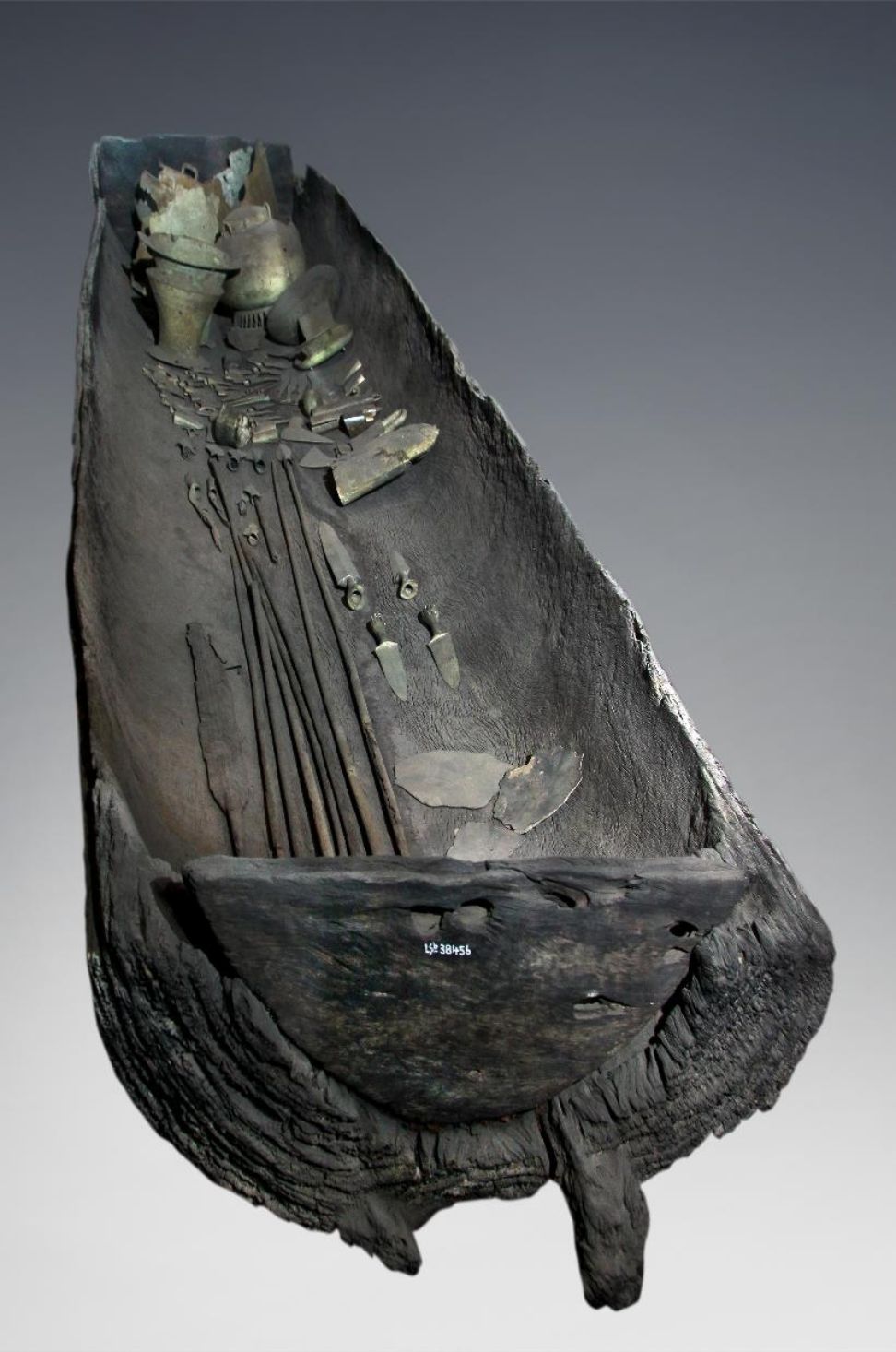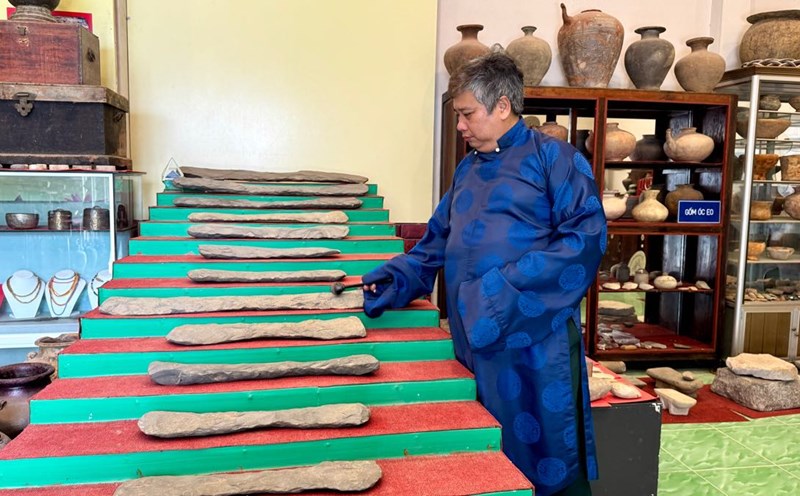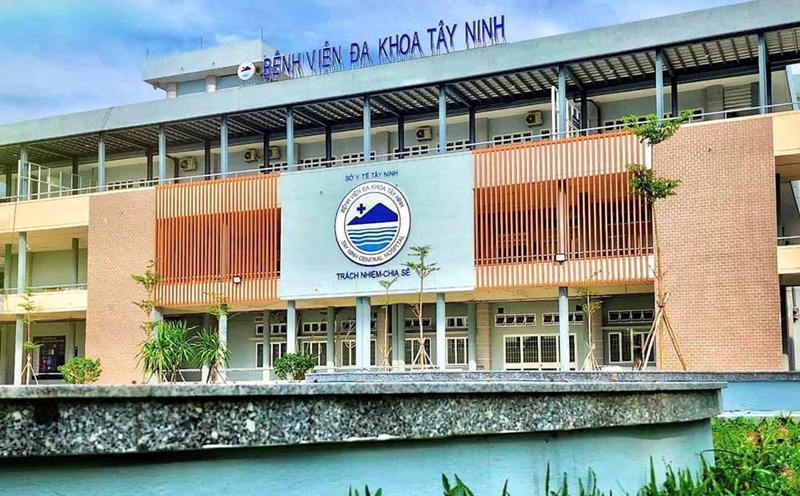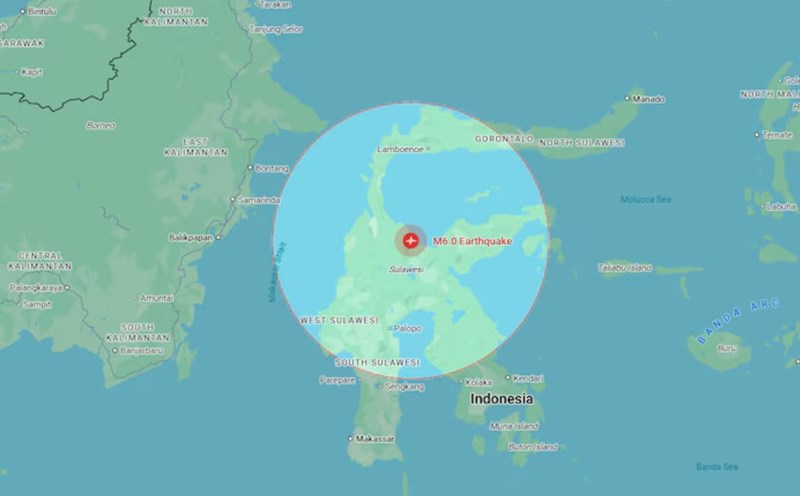A turning point discovery
More than six decades ago, in Ninh Son commune, Hai Phong city, archaeologists have excavated five boat-shaped coffins, all of which were long wooden trunks, dug up and covered with hoods. Of these, only one remains of burial items. The large head of the boat has precious bronze artifacts such as drums, beams, tops, and vases; the small head contains hoes, rates, and hoes. This special coffin, now known as the Viet Khe boat grave, has become a national treasure and is currently on display at the National Museum of History.
The excavation revealed a rare archaeological treasure trove: a large wooden boat tomb containing 107 copper, iron and pottery artifacts, dating back about 2,500 years. This is considered the largest, largest, and most precious intact boat tomb of Dong Son culture ever found in Vietnam.
The Viet Khe boat burial is made from an hollowed ironwood body, creating a unique boat shape, about 4.76m long, 0.77m wide and 0.39m deep. The coffin structure is still quite intact, with the two ends sealed with semi- longer planks. At the big end, the board is tightly assembled by tying a rope or folding it into the mortise hole. At the small end, in addition to the similar assembly method, the ancients also cut a deep hole to hold the board tightly. This form of burial is considered special, possibly for characters holding high positions in contemporary society. All five boat tombs in Viet Khe are arranged in the East - West direction, slightly towards the Southwest, showing that the ancient people had a clear awareness of the rituals and space orientation in the burial. The above data shows that boat tombs often belonged to the rich or powerful class in society at that time. The large scale and size of Viet Khe boat tombs, along with the richness of burial items, reflects the owner's high position and is a testament to the social differentiation in the Dong Son period, when the rich and poor classes have formed, creating a gap in social status or are in the process of taking shape clearly.

Rich, pinnacle of artifacts of Dong Son culture
The strongest impression of the Viet Khe boat grave is the scale and value of the artifacts found. In total, there are 107 artifacts, divided basically into groups including: weapons, labor tools, musical instruments, and household items. Most of the artifacts are made of brass, in addition, there are some decorations made of organic materials such as fabric and bamboo that have been rotted over time.
Weapons and labor tools including axes, scabs, spears, hoes, swords, axes, scissors... reflect the new level of manpower and metalworking techniques, while also showing the role of these tools as the main means of production and daily life. Gas music includes drums, bells, herring, etc., demonstrating the high development of spiritual life and religious rituals during the Dong Son period. Drum and bell tones are likely to be used in funerals, offerings or community festivals. household appliances including broth, bottle, pot, pot, tray, top broth, warm water, mai... reflect daily life and the sophistication in making household items. Notably, among the artifacts there are some rare unique types, typically the bronze incense table with a rope touching a male sopher and a piece of leather still bearing a paint imprint, which is believed to be a "fertile heart" made of leather, covered with color, with special meaning in both material value and spiritual symbols.
Viet Khe boat grave, with a rich amount of artifacts, sophisticated processing techniques and a harmonious combination of household items, weapons and rituals, clearly reflects the special status of the owner. It is likely that this is a leader of a certain locality or at least the owner of this tomb also has a blood relationship with the leader, the person with a high position in society. copper artifacts show that the Dong Son people have mastered the techniques of melting molds, leveling surfaces and creating floating patterns skillfully.
In addition, using artifacts such as bronze drums, bells, spiritual trays and many other musical instruments as burial objects shows that the spiritual life of the Dong Son people has developed at a high level. Along with that is a strictly organized system of rituals and beliefs about a world after death. Aware of the cohesion and maintenance of the cultural identity of the whole community.
The Viet Khe boat tomb is not only a rare archaeological discovery, but also a vivid witness to a brilliant civilization that once existed in Vietnam. From the unique shape of a boat coffin, the rich number of artifacts to the outstanding technical level, this relic has been helping researchers gradually solve the mysteries of the life, beliefs and society of Dong Son more than 2,500 years ago.
The boat of the deceased in Viet Khe land is perhaps not only a means of bringing soul to the world beyond, but also a symbol of carrying cultural memories, production traditions and the strong desire to live of the ancient Vietnamese people. With outstanding historical and cultural values, Viet Khe boat tomb was recognized as a national treasure under Decision No. 2599/QD-TTg dated December 30, 2013 of the Prime Minister.











